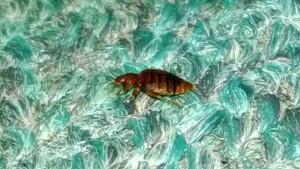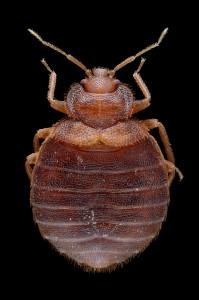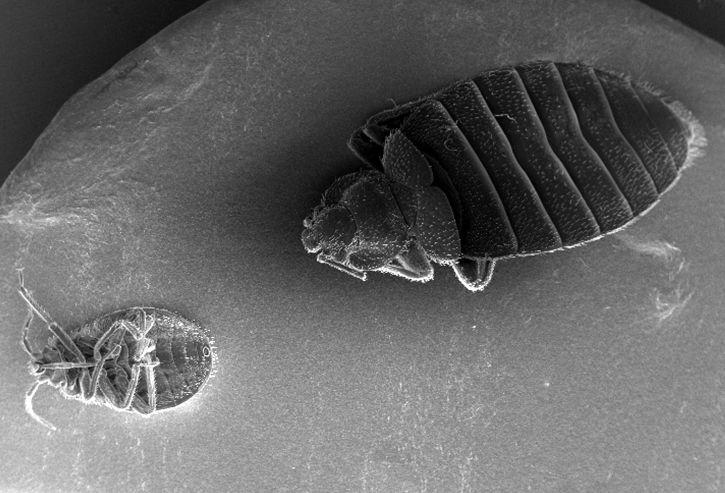Bed bugs come in many shapes, sizes, and colors. Different types of bed bugs will be found across the globe. We specialize in identifying and supporting your efforts to determine what type of bed bug infestation you have, and the most likely or practical bed-bug solution for you. Below are a handful of bed bug types, how to determine what species or infestation you might have in your home or business, and prospective pesticides that will be most effective.
Starting with Barn swallow bugs, this species of “bed bugs” will typically resemble your average bed bugs, but will concentrate their harborage inside of farms and mostly rely on feeding on bird swallows or next. However, should their original feeding target, such as birds in this case, become no longer available, it is likely and has been observed in the past that barn swallow bugs will attempt to feed on and nest inside of a human dwelling out of survival desperation. It’s worth noting that since this form of bed bug feeds on birds, that it’s likely that they will often be mobile, and should you have pet birds in your house or near your home it’s worth consideration preventative measures. We have a variety of bed bug sprays and preventative products and suggestions for ensuring your home and family are safe, bite-free, and happy when it comes to bed bug prevention and treatment.
Prospective Solution: A biochemical such as Cold pressed neem oil will most likely be ideal for dealing with bed bug infestations within a barn or poultry setting. That is, as neem oil is a natural chemical compound, a biochemical pesticide used in many shampoos, soaps, and even toothpaste. Taking into account that you do not want to poison or kill your live-stock, this sort of pesticide may be most desirable for combating Barn swallow bugs.
Next up is the Mexican chicken bug which is notoriously found in North American, typically found on farms where they feed on poultry such as chickens, birds, and even cows. However, like most bed bugs, if and when they can no longer feed on their preferred target, they will migrate towards households and humans. In fact, bed bugs rely heavily on their own internally genetic features such as a temperature gradient to identify and pursue a human or other mammal host. These creatures are quite sophisticated in this manner and gives all the more reason to take such an infestation seriously and seek professional support, assistance, and reliable products from our wide selection of various chemicals, pesticides, and other EPA approved product approaches.
Prospective Solution: Much like with Barn swallow bed bugs, neem oil could be proposed as a biochemical pesticide solution. However, another product and chemical compound pesticide to take into consideration would be Neonicotinoids. That is, as this acts on overriding the bed bugs internal nicotinic receptors of the bugs brain, and ultimately should cause it’s nerves to fire off, and go haywire, ultimating stimulating it’s brain rapidly and leading to death. This is, hypothetically, a reliable solution since it’s considered a synthetic pesticide, so ideally less harmful towards other animals, but also because it would be used in small doses. In essence, when laying down such a pesticide it’s unlikely that such a chemical approach will cause harm or death of farm animals or birds barring the placement is correct and as advised. The dosage for a bed bug is of course, astronomically smaller than a farm animal and in turn should prove to be a safe, prospective chemical solution to rid yourself of these bed bugs!
 The next bed bug is the tropical bed bug, which often will feed on humans, but typically found down south in much warmer climates. The tropical bed bug is typically a reddish brown color, and will vary in size dependent upon if it has fed yet. It’s also worth noting that the tropical bed bug, or Cimex hemipterus, can go for months without feeding, and have been reported to go over one year without eating and remain alive. Like most bed bugs, this type will typically stay within a matter of feet from it’s host, and is most active at sunset throughout the night. When you’re dealing with tropical bed bugs it’s important to appreciate why using reliable pesticides and preventative sprays are necessary. That is, as these critters are naturally adept to, and in fact prefer hotter climate—so the common strategy of trying to do it yourself in ‘frying’ your home or business with excessive heat will unlikely work to kill off your infestation. Not only does this specific of bed bugs use a temperature gradient to locate feeding targets, but they also likely use a carbon dioxide gradient making them especially unique in nature.
The next bed bug is the tropical bed bug, which often will feed on humans, but typically found down south in much warmer climates. The tropical bed bug is typically a reddish brown color, and will vary in size dependent upon if it has fed yet. It’s also worth noting that the tropical bed bug, or Cimex hemipterus, can go for months without feeding, and have been reported to go over one year without eating and remain alive. Like most bed bugs, this type will typically stay within a matter of feet from it’s host, and is most active at sunset throughout the night. When you’re dealing with tropical bed bugs it’s important to appreciate why using reliable pesticides and preventative sprays are necessary. That is, as these critters are naturally adept to, and in fact prefer hotter climate—so the common strategy of trying to do it yourself in ‘frying’ your home or business with excessive heat will unlikely work to kill off your infestation. Not only does this specific of bed bugs use a temperature gradient to locate feeding targets, but they also likely use a carbon dioxide gradient making them especially unique in nature.
Prospective Solution: This form of bed bug can be combated with either desiccants or insect growth regulators, since both will directly target bed bugs, their ‘homes’ within your house, and will do so in a swift, effective manner. These two approaches both focus on interfering with the growth, as well as ability to survive of the tropical bed bug.
We hope you will come back to continue reading and learning about various bed-bug types and what safe, chemical solutions and pesticidial approaches we have to keep you and your family, home, or business bed bug free!
If you really want to get rid of bed bugs today try SayByeBugs! It was developed as a safe and highly effective alternative among a sea of products that rarely deliver on their promises.








